The Boys' Garth Ennis revisits his DC anti-hero Hitman
Reminiscing about the birth and life of Tommy Monaghan, a.k.a. Hitman
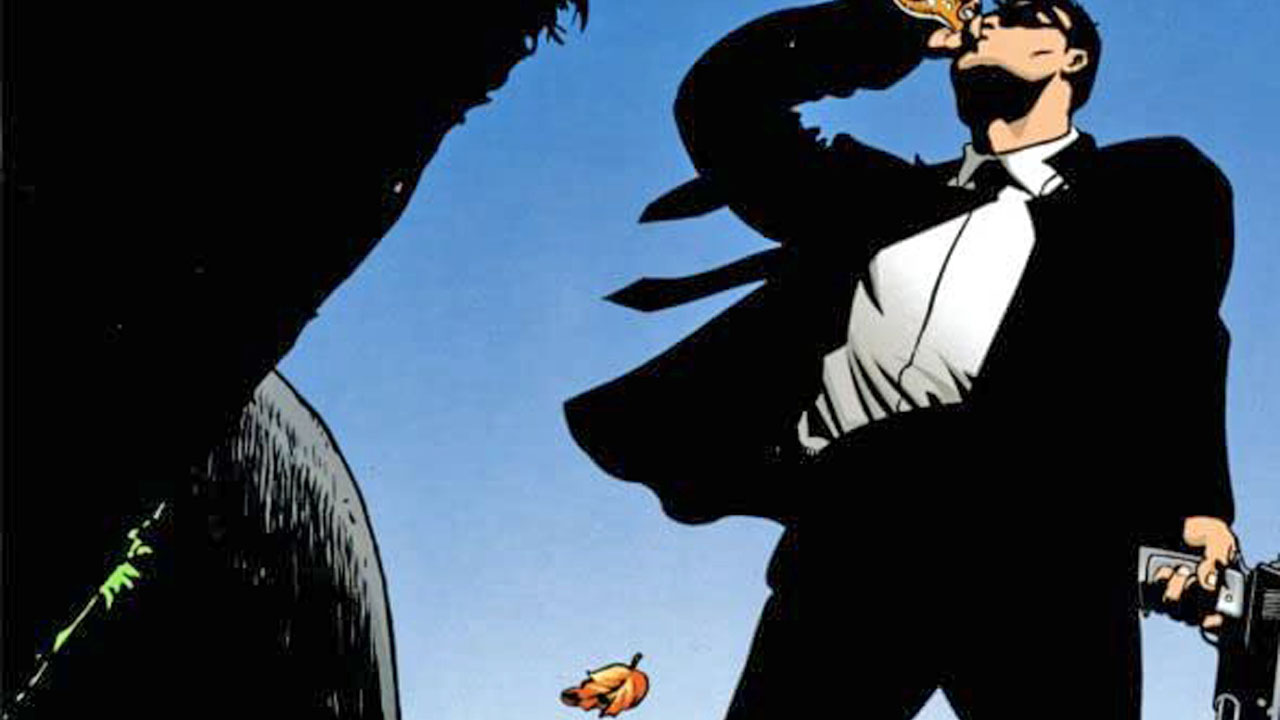
If you're ever unlucky enough to find yourself in the part of Gotham known as 'The Cauldron,' take a moment to head on over to the corner of Saint and Peckinpah for a pint at Noonan's Sleazy Bar. The joint's not what it used to be – instead of old Sean, there's a giant demonic mouth screaming "I – AM – BAYTOR!" and it's been a long time since Sixpack staggered in to brag about how he took out Darkseid with a broken whisky bottle before passing out in his own sick.
But if you stick around for a bit, you'll hear the stories…stories about a crew of losers, thugs, and killers who spent day and night around the bar as they swapped war stories, quoted old movies and anted up for games of poker that they never seemed to finish. They'll talk about Sean's nephew Pat, not a killer, but the best friend that one could ever have. They'll talk about Hacken, dumb as Hell and fierce as a lion, or ice-cold Ringo Chen, who walked with Death himself. They'll talk about Natt the Hatt, who scarfed down Bucket Burgers as big as his head, but was still the one guy you'd want at your side when it all went down.
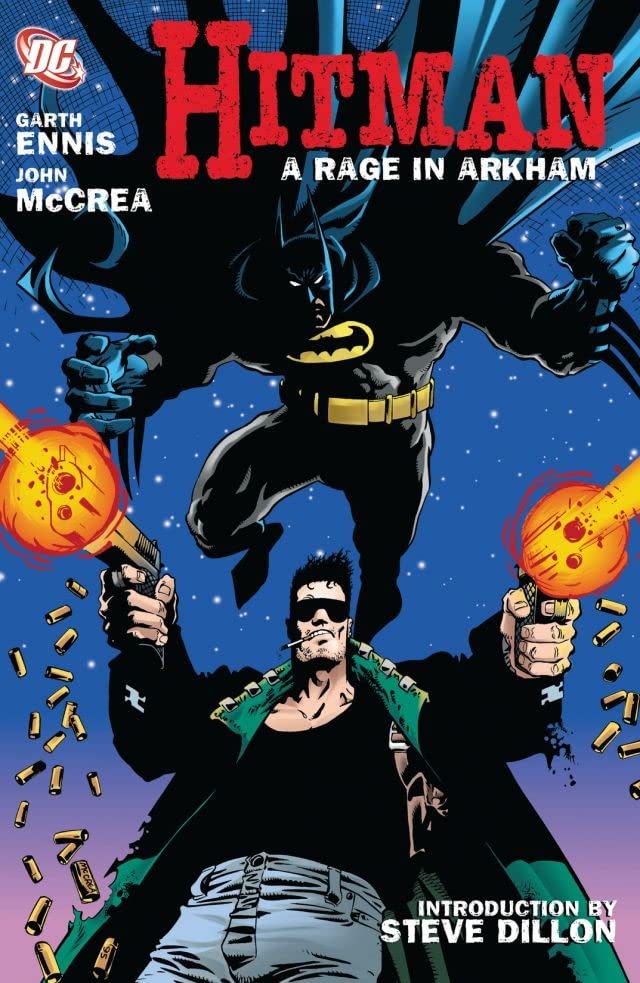
And they'll talk about a Cauldron boy named Tommy Monaghan. A good Catholic who insisted on only killing 'bad' people, Tommy got himself some superpowers when he got attacked by an alien in something called 'Bloodlines,' an event that gave rise to such other superpowered individuals as… whatshisface, and that other guy. Armed with X-Ray vision and telepathy, he faced off with every crime boss from Moe Dubblez to Men's Room Louie, puked curry on the Batman, and…you really don't want to know what he did to Lobo.
He killed scores of thugs, would-be vigilantes, and everything else from dinosaurs to demons to dolphins (well, they were zombies). He messed things up with a couple of good women, gambled away too much of his blood money betting on the Gotham Knights, and never, ever thought of himself as a hero. He had soulless black eyes, knew he and his friends were damned, and blew every chance he had to walk away from his life of violence. Still, if you knew him, you'd say that he was a pretty cool guy.
For 60 issues, a handful of specials, and a couple of guest appearances (including a memorable cameo in Grant Morrison's JLA where he used his X-Ray vision on Wonder Woman), Tommy was the star of Hitman, one of DC's most acclaimed books of the '90s. Since the series end, Ennis and co-creator/artist John McCrea have returned a few times, but it's been a while.
Ennis spoke with Newsarama about the original Hitman series, along with some of the extras. With more than 70 comics to cover, we broke things down into different sections covering the entire history of Hitman. Sit back, pour yourself a cold one, and get ready to relive the tale of Tommy Monaghan.
First Appearances

Tommy Monaghan first appeared in The Demon Annual #2, part of a crossover called 'Bloodlines' that ran through DC annuals in 1993. The crossover involved a group of alien parasites whose attacks sometimes created new metahumans from their victims. After appearing in a couple more issues of the Demon prior to that book's cancellation, Tommy made a guest-appearance in The Batman Chronicles before debuting in his own book in early 1996. All of these appearances were done by the creative team of Garth Ennis and John McCrea, who would stay with the book through its entire run.
Comic deals, prizes and latest news
Get the best comic news, insights, opinions, analysis and more!
Newsarama: I'd like to start by talking about the genesis of Hitman. How did you develop the character of Tommy Monaghan, and did you originally see the character as someone who could carry his own series?
Garth Ennis: Tommy was born of the 'Bloodlines' annual crossover, in which alien monsters bit people and gave them superpowers, thus handily giving DC a ton of new characters. John and I were both into John Woo's Hong Kong shoot-'em-up movies at the time, and fancied something in that vein. His own series, indeed his very survival, was very much a case of putting the character out there and hoping for the best.
Nrama: What appealed to you about the character, and made you keep bringing him back?
Ennis: His irreverence. The supreme ease of writing a character whose sense of humor was pretty much my own. And a natural affection for the underdog, too.
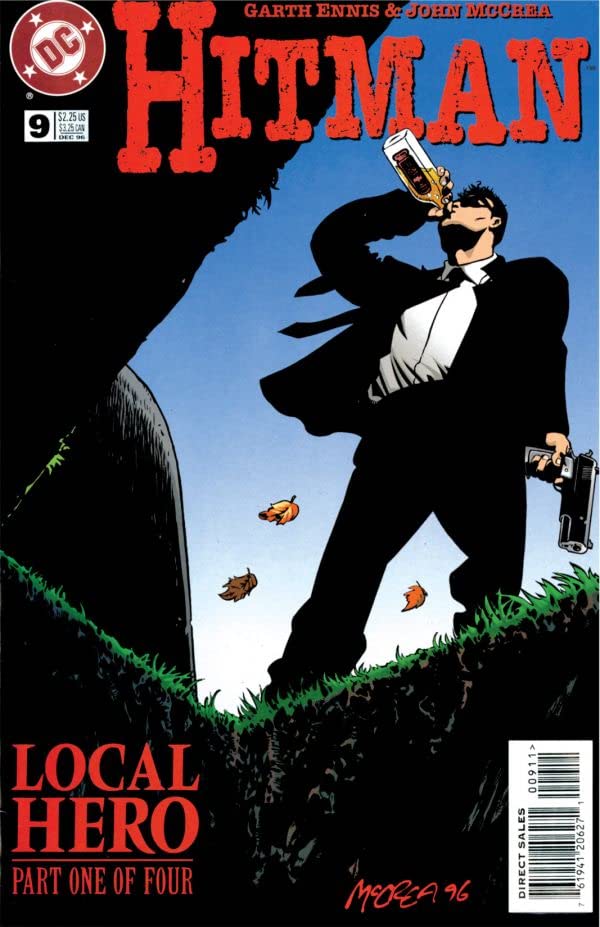
Nrama: How did the ongoing series come about? How did you pitch it?
Ennis: The Demon got canceled and we wanted to do something new, and Tommy was a natural choice. The pitch was pretty much the guy from The Demon shooting monsters and supervillains; more of the same, but in his own book and his own world.
Nrama: What were your 'rules' for the series – did you have a specific plan for how the characters would see each other, or how they would see other superheroes?
Ennis: The only rule, really, was to avoid writing superhero characters or participating in crossovers as much as humanly possible, and if I had to, to do it on my own terms. Stay in our own little corner.
Nrama: You had a debut story in Batman Chronicles simultaneously with the ongoing series. What was the challenge in doing a story set during a large crossover that also had to serve as a preview for your new series?
Ennis: The Batman associate editor rewriting all the dialogue in the Batman Chronicles story, and then having to be painstakingly argued into letting me change it back. Not a terribly bright boy, as I remember.
Getting Started
Nrama: Tell us a little about the origins of the Noonan's crew, and the whole Cauldron area in general.
Ennis: Sean and Pat had already been established in The Demon, as surrogate father and brother figures to Tommy. Hacken was the comic relief idiot. Ringo was a nod to the aforementioned John Woo movies, a direct lift of the tragic gunman character usually played by Chow Yun Fat. And the Cauldron was Hell's Kitchen, twenty or thirty years ago, an Irish ghetto forgotten/ignored by polite society.
Nrama: Many of the book's best scenes came from the crew just sitting around playing poker. What were the challenges in pulling off scenes like these, and what was it like working with John on them?
Ennis: You need good storytelling. It's not John's greatest strength, but he has an excellent sense of character and that was enough to carry it off.
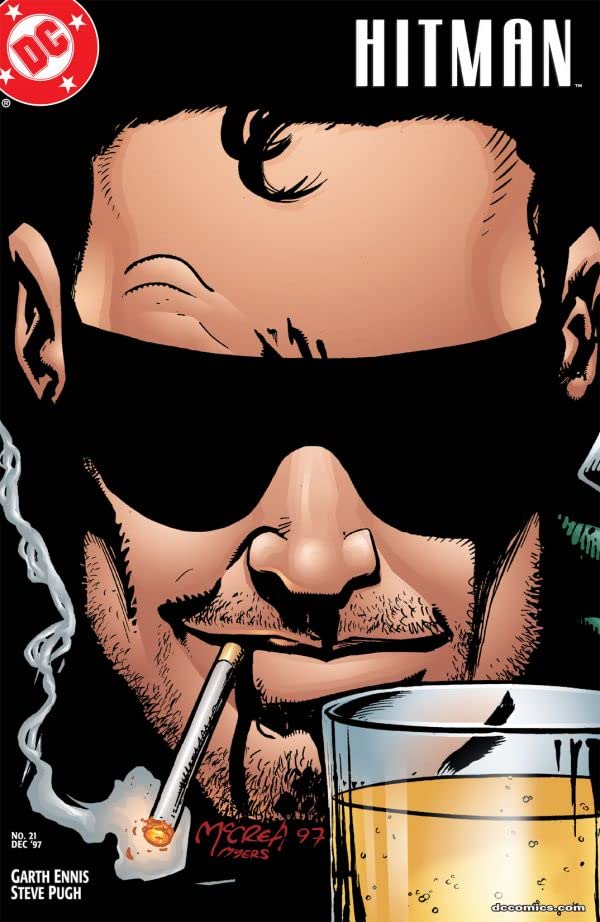
Nrama: Let's talk about the initial storyline, 'A Rage in Arkham.' One of the things I like about it is that it subverts a pretty clichéd premise, Tommy going after the Joker. How did you come up with the scene where Tommy collects "beer an' pizza money" by picking off a half-dozen or so other Arkhamites on the way to the Joker's cell? That was the scene that sold me on the series.
Ennis: Just occurred to me while writing it. To Tommy, they're scum – mentally ill or not, they're serial killers, rapists, and pedophiles. May as well kill them, we'll hardly be losing the cure for cancer. And there's money to be made.
Nrama: In the first storyline, Tommy's powers are used pretty heavily, but they play less and less of a role as the series goes on. What was your take on these powers?
Ennis: Exactly. I kept forgetting to use them.
Nrama: The Mawzir (Tommy's demonic nemesis in the first arc) seems like a character who was originally intended to play a larger role in the series. Was this the case or not, and what's your take on that character?
Ennis: He was really just meant to be a thoroughgoing scumbag, not much more to it than that, although his origin as six Nazi bastards glued together was kind of interesting.
I try not to have characters return too often, otherwise you get that tedious sort of 'the Joker's escaped again' feeling. My general line in The Punisher, for instance, is that you can't survive two encounters with Frank Castle – the second time around, either you kill him or he kills you. That probably held true for Tommy Monaghan, as well.
Nrama: Why did you wait until the second storyline to introduce Natt the Hat? Was he always intended as a major character, or did he just sort of take over?
Ennis: Bit of both. I wanted Tommy to have a good friend who was his equal (or in Natt's case, slightly outclassed him, at least in terms of toughness). He ended up being in a lot more storylines than I intended, but it seemed to work out well for all concerned.
Heroes, Super and Otherwise
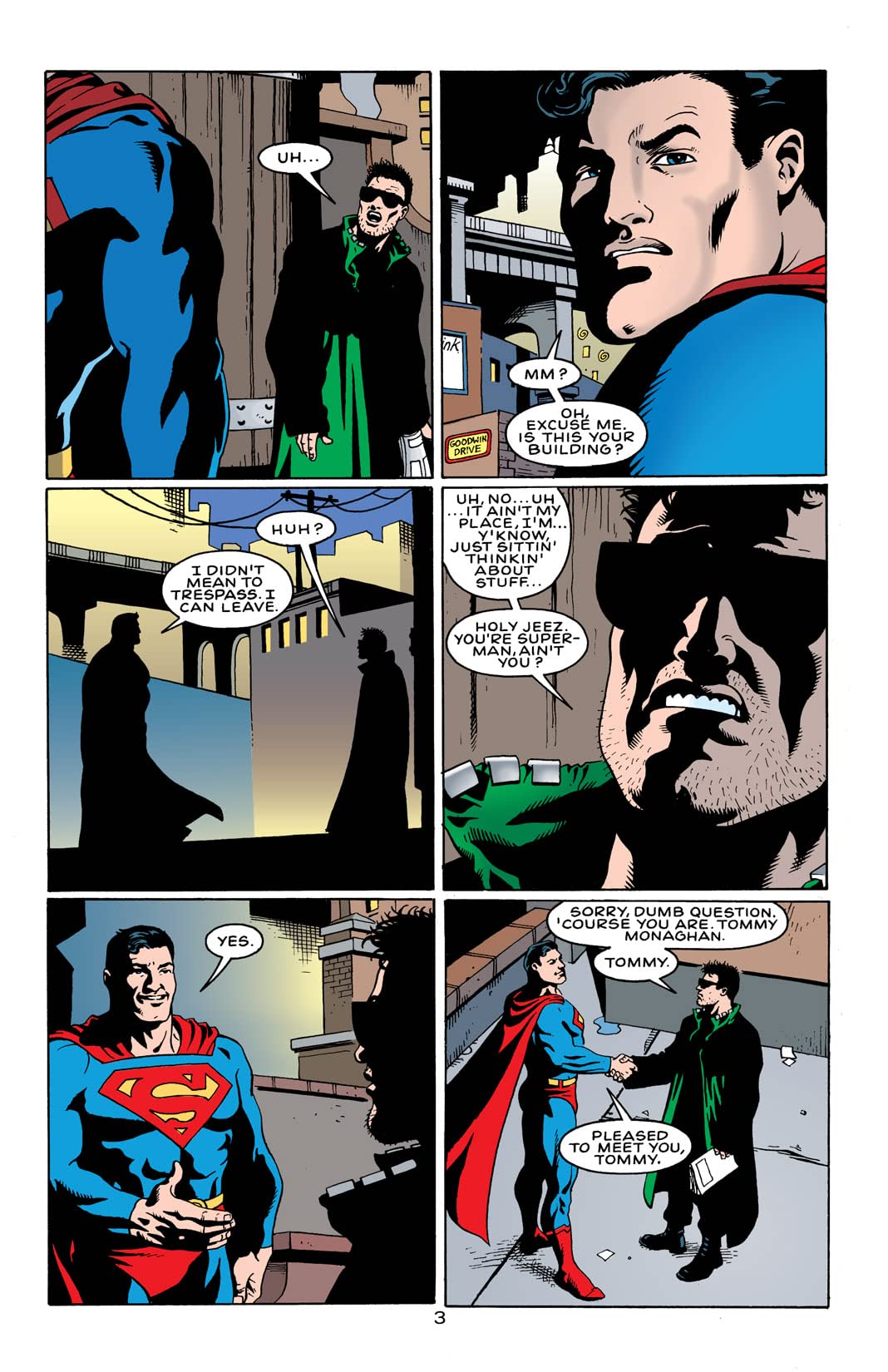
Nrama: What was your take on Tommy's relationship with superheroes? Most of them, such as Batman and Green Lantern, seem to exist mainly as Tommy's foils. As a writer, how did you view those characters?
Ennis: Tommy saw them all as idiots, mostly walking bullet-magnets to be avoided like the plague. Occasionally they would be worthy of a little more respect, e.g. someone as dangerous as Batman, but at the end of the day, it's still a man in tights.
My own attitude has always been to write established characters as I think they would actually behave, rather than by any company guidelines. Batman, again, is one of those military genius figures like General Patton – you'd want him on your side, but you wouldn't want to spend more than two seconds in his company
Nrama: Superman, on the other hand, is the one hero for whom Tommy shows respect, and the issue where they talk (#34) was one of the best in the series. I'd like to hear your thoughts on that issue, and on the character of Superman in general.
Ennis: To Tommy, Superman is the ultimate American, the one concept which will turn our boy just a little bit sentimental. To me – again, writing the way I think the character would be- Superman should be like Jesus. Constantly let down by humanity, and never giving up on them.
Nrama: One of my favorite parts of the book was how you constantly took crossovers such as The Final Night and worked them to your advantage, creating tales that had very little to do with the overall storyline, but provided great character moments for Tommy and the crew. What were the challenges in crafting these tales, and what was your take on crossovers in general?
Ennis: The challenges were that they were mostly bloody awful, and there was simply no escape from them.
The Batman ones, in particular, involved something deeply unimaginative happening to Gotham City every year or so (earthquake, plague, unsightly urban decay), culminating in Batman finishing the story in a slightly darker charcoal shade of outfit – thus fulfilling the initial promise of nothing ever being the same, presumably.
This was not the writers' fault, by the way, far from it. I used to read the series outlines for these things and despair for the poor bastards.

You did what you could. Occasionally you could have a bit of fun, like One Million, or taking the piss out of No Man's Land. And, to be fair, the Final Night story did end up being pretty good.
Nrama: I'd also like to talk about the wide variety of original creations you had for the series, ranging from the coke-addicted Nightfist to Gunfire 1,000,000 ("I turned my ass into a hand grenade!"). Do you have any favorites among those?
Ennis: Probably the Daredevil guy, Blind Bastard. It had to be done.
Nrama: And of course, Sixpack and Section Eight. How on earth did those characters come about?
Ennis: The idea was to have a bunch of superheroes who just couldn't cut it.
Sixpack was a delusional drunk in soiled tights, and therefore the most direct commentary on superheroes.
Shakes had epilepsy, there was no excuse for that at all.
Jean De Baton was born of an old Denis Leary rant, back when I thought it was big and clever to make fun of the French.
Flemgem was pretty obvious, likewise Friendly Fire.
The Defenestrator was born of a guy John and I heard about, who apparently collected comic book artwork featuring images of women being flung through windows. We thought we were onto a sure-fire moneymaker, but we never heard from the guy.
And Bueno Excellente, whose power we could never reveal but which was actually pretty obvious, came from a porno movie a friend of John's saw - in which a gentleman indicated his approval of a young lady's actions by groaning, 'Bueno… bueno… excellente…' He told us about this, and something about the way he said it made me think- there's a character in there, somewhere.
Nrama: Dogwelder actually won 'Best New Character' from Wizard magazine. Would you mind sharing the story of how that character was created?
Ennis: That one was Steve Dillon's. He and a friend came up with Dogwelder in a bar a long time ago, and he said we were more than welcome.
Greatest Hits

Nrama: 'Zombie Night at the Gotham Aquarium' is my personal favorite story from the series. How did that one come about?
Ennis: A visit to the San Diego Aquarium in the summer of 1995. I was looking at some adorable baby seals, and it suddenly occurred to me: what if they were undead?
Nrama: "Who Dares Wins' was a story you had been wanting to tell for a long time. Why did you want to tell it in Hitman, and why was it meaningful to you?
Ennis: It was specific to Hitman; it'd been set up around issue #5. I like British characters; generally, I don't think there are enough of them. And I wanted to drop Tommy and Natt in a situation where they'd be completely outclassed and have to deal with the consequences, both short and long term.
Nrama: Just to break it down, what are your personal favorite storylines?
Ennis: "Zombie Night at the Gotham Aquarium,' 'For Tomorrow,' ' Fresh Meat,' 'Superguy,' 'The Old Dog.'
Nrama: Favorite single issues?
Ennis: 'The Night the Lights Went Out,' (#8), and the last part of 'Closing Time' (#60).
Nrama: Favorite character moments (the top ones, anyway)?
Ennis: Pat's funeral, anything involving Tiegel's grandfather, Sixpack sacrificing himself, Bueno's appearances, Ringo's last words. Too many to remember offhand.
Nrama: Favorite action sequences?
Ennis: Tommy and Ringo defending Wendy's apartment in part two of 'For Tomorrow,' the dinosaur stuff, the tank bits in 'Tommy's Heroes.' Again, too many to recall.
Nrama: Favorite images from John's art?
Ennis: Dinosaurs, some of the scenes in Noonan's, Sixpack crapping himself, the shark bit at the aquarium, etc etc etc
Nrama: And conversely – are there any storylines or characters you wish you'd done differently?
Ennis: 'Ace of Killers' could have been shorter. So could 'Closing Time,' but we had a ton of stuff to get in there.
Love and Death
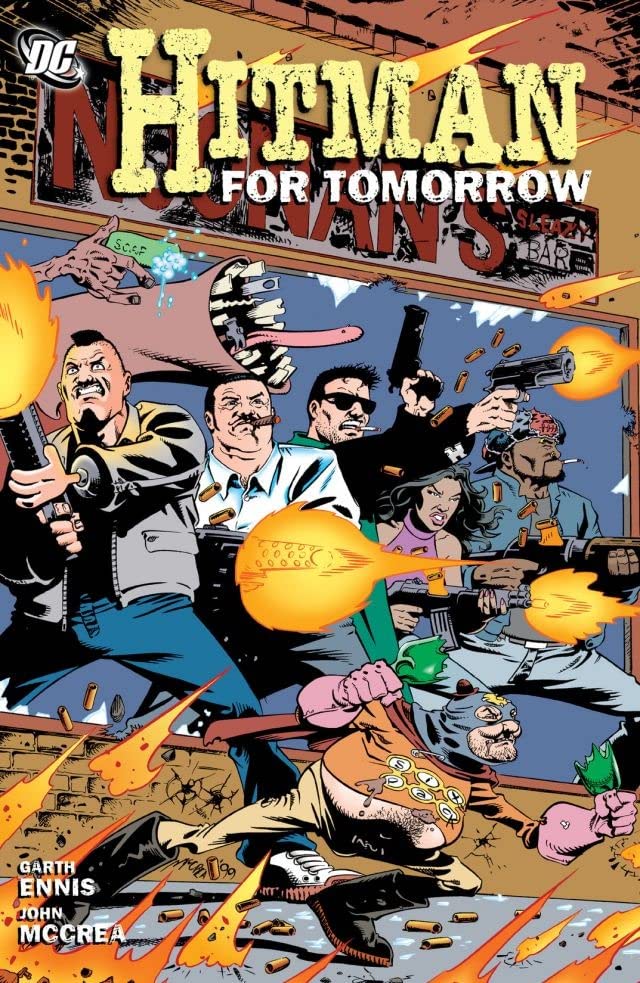
Nrama: In a book called 'Hitman,' death is pretty much a given, but the book was unique in how often and how poignantly major characters died. How did you pace things out...did you always know who was going to die, and when, or was it just a case where the story demanded it?
Ennis: I figured out pretty early on that everyone would eventually buy the farm. They lived by the gun, so that was how they had to check out. The order of the deaths was set pretty much by the effect they'd have on Tommy: Pat (it isn't a game anymore), his sister (this life kills innocents, too), Ringo (if he can die, what chance do I have), Sean (exit the father figure, the one constant), Sixpack (not even the comic relief gets out of this)…leading, of course, to the inevitable.
Nrama: It was clear when Sean died that the series was about to wind down...was killing that character off difficult for you? Were there any other deaths that were hard to write?
Ennis: They all brought a lump to the throat. I liked them all; each death took us a step closer to the end of everything.
Nrama: Tommy's incredibly dysfunctional romantic relationship with Detective Tiegel was one of the funnier and sweeter parts of the series. How did that come about, and what are your thoughts on that character?
Ennis: Tiegel was fun, in that she tried hard to be a take-no-crap type but was constantly drawn back to Tommy anyway. I loved writing her grandfather, there was something gloriously perverse going on there. Ultimately, Tiegel survived because she did to Tommy what he couldn't do to the life he led: she walked away.
Nrama: The meat of the book was the friendships between Tommy and the crew, this surrogate family, and how painful it was as that family fell apart. That's a recurring theme in many of your books – why is it compelling to you, as a writer?
Ennis: Beyond the people we love, what else is there in life that's worth hanging onto? That's about as sentimental as I ever get, incidentally; if asked again, I'll deny I ever said it.
The End
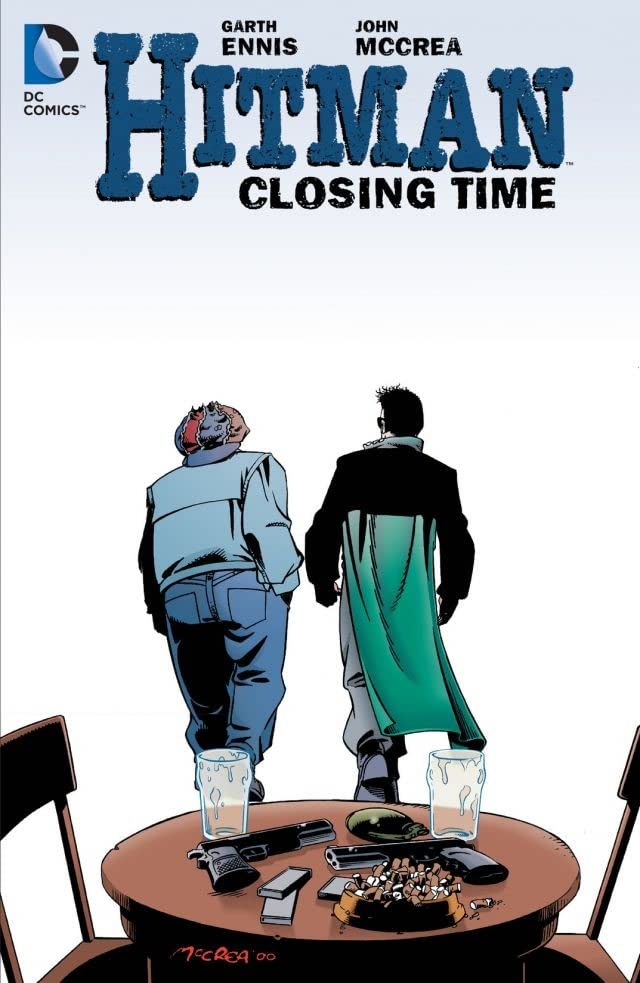
Nrama: Did you always know how Hitman would end? The last issue feels very...inevitable.
Ennis: I figured out that particular ending about halfway through the book's run. I knew what would happen, I just wasn't sure of the details
Nrama: If you had been able to continue the book, how long do you feel it would have run?
Ennis: Not much longer. Maybe six to eight more issues. I was happy to leave it where I did, it has a nice sense of completion.
Nrama: Do you feel that Preacher's end helped trigger the end of Hitman?
Ennis: Maybe a little, though I'd been given the word that Hitman would have to start winding down about a year and a half before the last issue shipped. Sales were nothing special, and weren't giving any sign of improving. I doubt Preacher continuing past the point that it did would have bought us a great deal longer- which wasn't really all that necessary anyway.
Nrama: What was your reaction to the book's cancellation?
Ennis: Amazed we lasted as long as we did. Looking forward to writing the final storyline, doing all the scenes I had stored away for so long. Slightly sad, knowing it was the end of an era.
Etc.
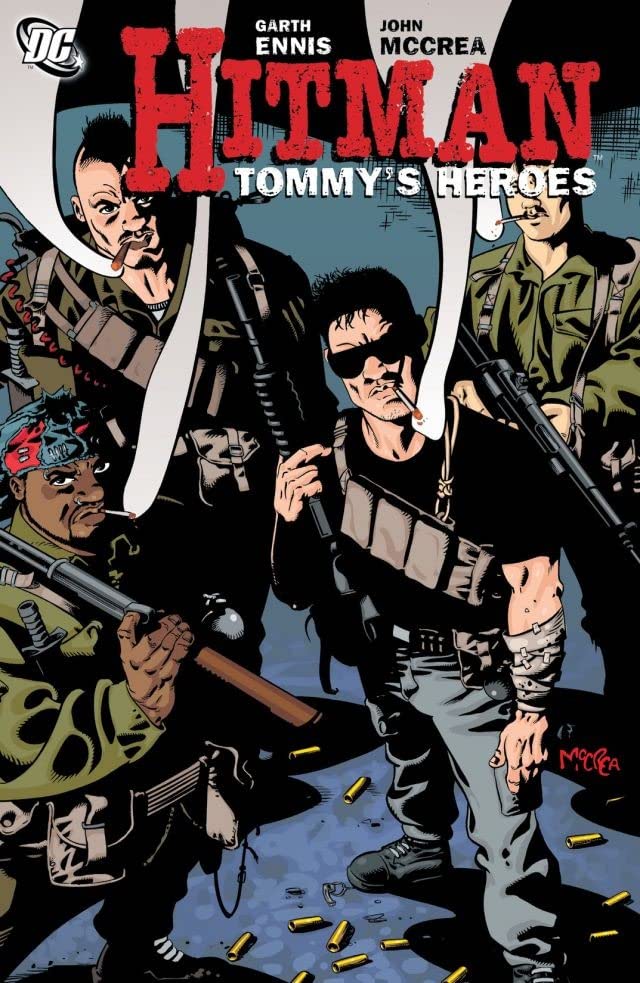
Nrama: Peter Tomasi, who helped edit the book throughout its entire run, is a writer these days. What was it like working with him?
Ennis: It was a pleasure. Pete's smart, professional, civilized, a good friend. I wish him nothing but the best in his writing career.
Nrama: There were only a few issues not drawn by John – some great artists, to be sure, but did you feel less comfortable writing for someone else?
Ennis: Not really. When you're talking about the likes of Carlos Ezquerra and Doug Mahnke, you know you're in good hands.
Nrama: How did Baytor come to be in the book?
Ennis: He was one of the stalwarts of The Demon, and one of my favorite characters
Nrama: Random, fanboy question: When I read 'Fresh Meat,' the story with Scarback the T-Rex, I noticed it was similar to a story in a Judge Dredd reprint I owned with a dinosaur. Was 'Fresh Meat' a homage to that story?
Ennis: Only in that the Dredd story, namely the Satanus episodes of 'The Cursed Earth', was a continuance of the epic I was really harking back to: 'Flesh,' which ran in the first 20 issues of British anthology 2000 AD. I was seven years old and reading about giant Tyrannosaurs slaughtering futuristic cowboys. Blood sprayed. Limbs flew. I was in paradise (I think Warren Ellis and Mark Millar will tell you much the same thing).
Actually, if anyone from 2000 AD's reading this, what about doing one of those nifty reprints you're knocking out at the moment of Flesh Book One?
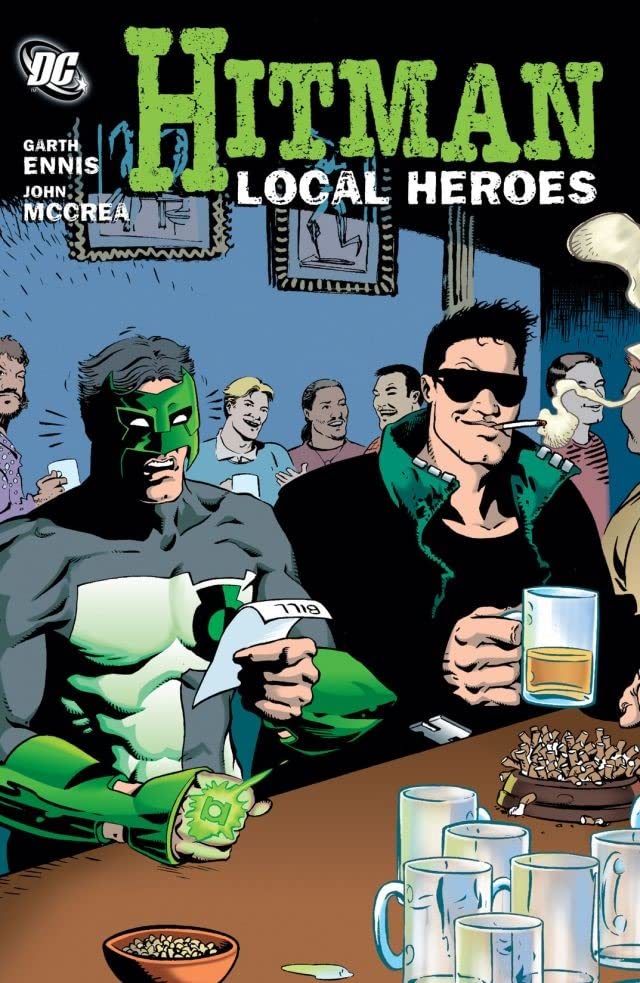
Nrama: Did you ever run into trouble because of the book's content? Was there ever talk of making it "Mature Readers?"
Ennis: We'd have the odd 'Goddamn' or 'son of a bitch' excised, usually quite arbitrarily. People look for rules for this kind of thing, when in fact the last thing you ever want is a series of set rules - because whoever's setting them will automatically err on the side of caution. What you want is a smart editor who knows how to catch his boss in a good mood, and I'm fortunate to have worked with several.
The one book we ran into trouble with was the Hitman/Lobo Special, for which a mature readers label was deemed essential. Dogwelder did not play well in certain quarters. Lobo's unconscious tryst with Bueno appalled a number of people, and in fact, had to be toned down.
Nrama: Any final thoughts on Tommy and company?
Ennis: Hitman is one of my all-time favorites, and my affection for the book and the characters outstrips almost everything else I've ever worked on.
Preacher ended exactly at the point it was meant to and remains in print - and then some – to this day, I have absolutely no regrets there at all.
The Demon I recall with a wry smile.
Hellblazer, it sounds bizarre, but half the time I forget I even wrote it. The Punisher rolls on down its bloody path.
But Hitman I remember with enormous fondness, and a certain degree of pride - for a book like that, with no superheroes and no mature readers label, to last five years and be full of the kind of madness we filled it with… well, that's not such bad going, is it? Getting the thing out of Limbo would mean we could send a whole new audience over the edge.
Nrama: Last but not least...in the final issue, you said, "I have the strangest damn feeling I'll never have quite this much fun again." Still true?
Ennis: Never this much of that kind of fun, but plenty of other varieties.
All of Ennis' Hitman is available on digital platforms. Check out Newsarama's list of the best digital comics readers for Android and iOS devices.
[Editor's note: this story was originally published in 2007.]
Zack is a comics journalist, who has written primarily for Newsarama, GamesRadar, and Indy Week. His words have also appeared in The Washington Post, AXS, VOX, The Sports Network, Gambit, and more.


